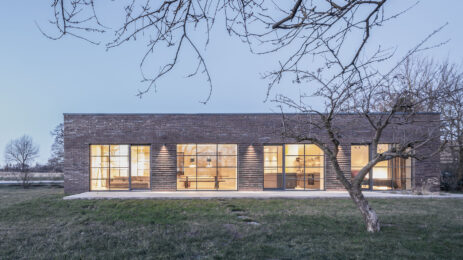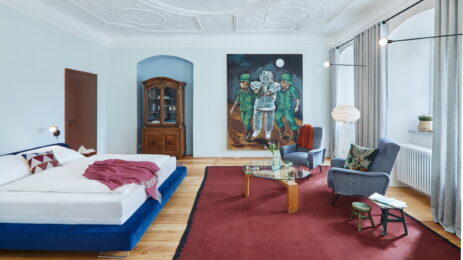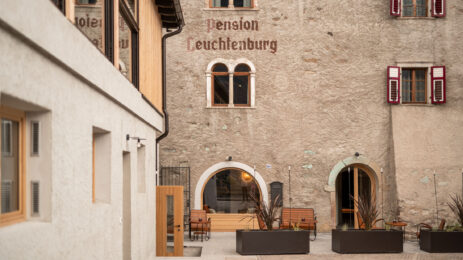Travel can inform and educate, but many destinations no longer want visitors at any cost.
We live in times of upheaval. Metropolitan areas are growing and becoming more densely populated, rents and housing demand have since risen exponentially in many places, while the rural exodus in the provinces is increasing, traditional and established structures are partly disappearing, or the expansion of modern infrastructure often continues to stagnate. Or reversely, regions that were once uninteresting for tourists, such as the Uckermark, are increasingly being “discovered” around Berlin – and apparently to such an extent that even high-ranking media such as DIE ZEIT have meanwhile started to take notice.
Elsewhere, evergreen destinations such as Venice or Majorca are fed up with overtourism that degrades the country and its people and are trying with specific initiatives to ward off the streams of tourists that descend on them like swarms of locusts via low-cost airlines or cruise ships and just as suddenly disappear again without leaving any added value worth mentioning.
The pandemic may have temporarily put this on a back burner, but the problems have not become any less intense as a result.
What does this have to do with us at HOLIDAYARCHITECTURE?
Many partner houses from our network are traditionally found in more rural areas. We believe that locations which offer high-quality hospitality and architecture are small, valuable steps towards future-oriented travel – for and with more foresight, cultural empathy and meaningfulness.
If – as in the above example of the Uckermark – contrary points of view or even rejections should in fact arise, we will attend to them (self-)critically and take concrete action. This is because the effects of overheating that have been observed for years (concerning property prices as well as tempers) and the unease in the travel industry (bucket lists, overtourism, gentrification) that already occurred before and independently of Covid 19 also give us cause for concern.
Holidayarchitecture properties that are often in areas that have yet to be (re-) discovered and that could still cause excitement or are already doing so quietly and secretly, are of course no panacea against this. But also, they are certainly small steps in the right direction.
Some of these forgotten destinations have experienced a certain “renaissance” in the course of the pandemic – albeit to a lesser extent than we had hoped for and encouraged. In addition, during the pandemic-related further shortage of holiday accommodation, many of our readers anticipated that houses and destinations in the “second tier” were much more promising in terms of booking success, and above all were able to offer unexpectedly positive holiday experiences. Especially in these areas, which are still under the radar of broader public perception, we are particularly pleased to be able to present new holiday destinations again and again, which are not only architecturally valuable, but also have the potential to reconcile residents, guests, and nature alike.
What next?
Of course, well-built architecture alone can of course neither stop the rural exodus (in one direction or another) nor bring about a turnaround in overcrowded hotspots.
It does, however, help to mitigate such developments in certain areas – at least indirectly. And in combination with a mindful hospitality, it can, in our view, very well point the way forward in order to create lighthouse projects.
On this note, we would be pleased if you were to enjoy meaningful and authentic holiday experiences at the “fringes of tourism” through our network and thereby discover unknown places that – perhaps contrary to initial assumptions – inspire and enrich. And what’s more, by choosing them, you will have a very personal influence on what happens in the (travel) world in the long term.
For our part, we promise to take an even closer and more careful look in the future when we select new partners and to pay even more attention to sustainability in all its facets.
“Though we travel the world over to find the beautiful, we must carry it with us or we find it not.”
(Ralph Waldo Emerson, Essays. First Series – 1841)
Text: Britta Krämer and Ulrich Stefan Knoll, November 2021
This article first appeared as an editorial in our book HOLIDAYARCHITECTURE 2019. Due to its continuing relevance, our findings were only added at the end of the 2nd Corona travel season.






One Comment
Ein hervorragend geschriebener und so wichtiger Beitrag, der mich sehr beeindruckt hat. Vielen Dank an die beiden Autoren.
Sehr gerne lese ich immer Ihre neuen Beiträge und erfreue mich an den wunderschönen Objekten in herrlicher Umgebung und staune dabei immer wieder, wie unglaublich schön Architektur in die entsprechende Landschaft angepasst und sinnvoll gebaut werden kann.
Alles Gute Ihnen weiterhin und freundliche Grüße,
F.- B. Zerfaß